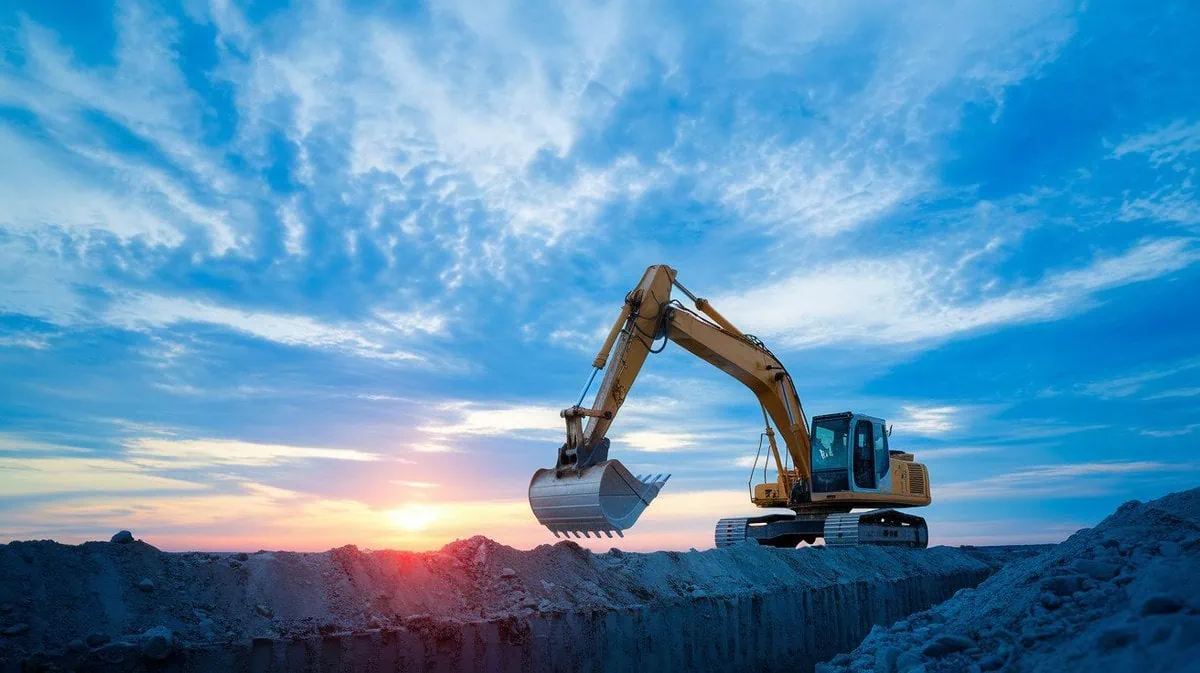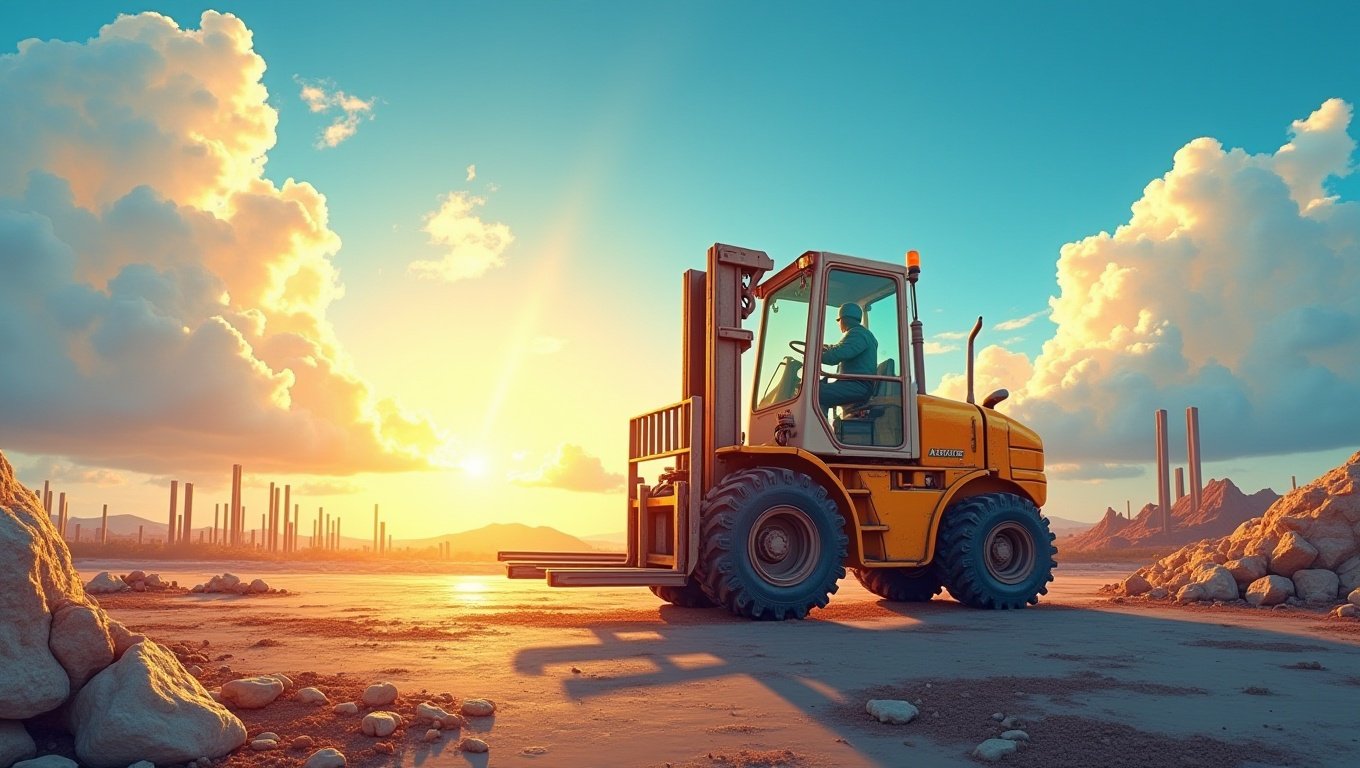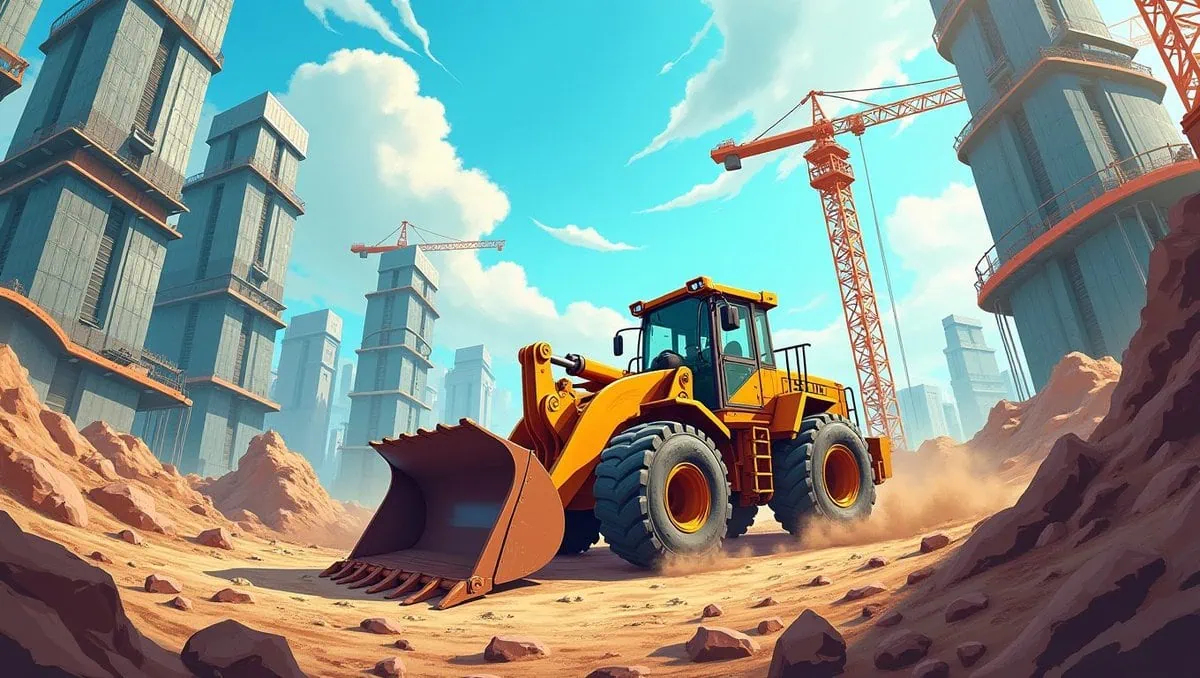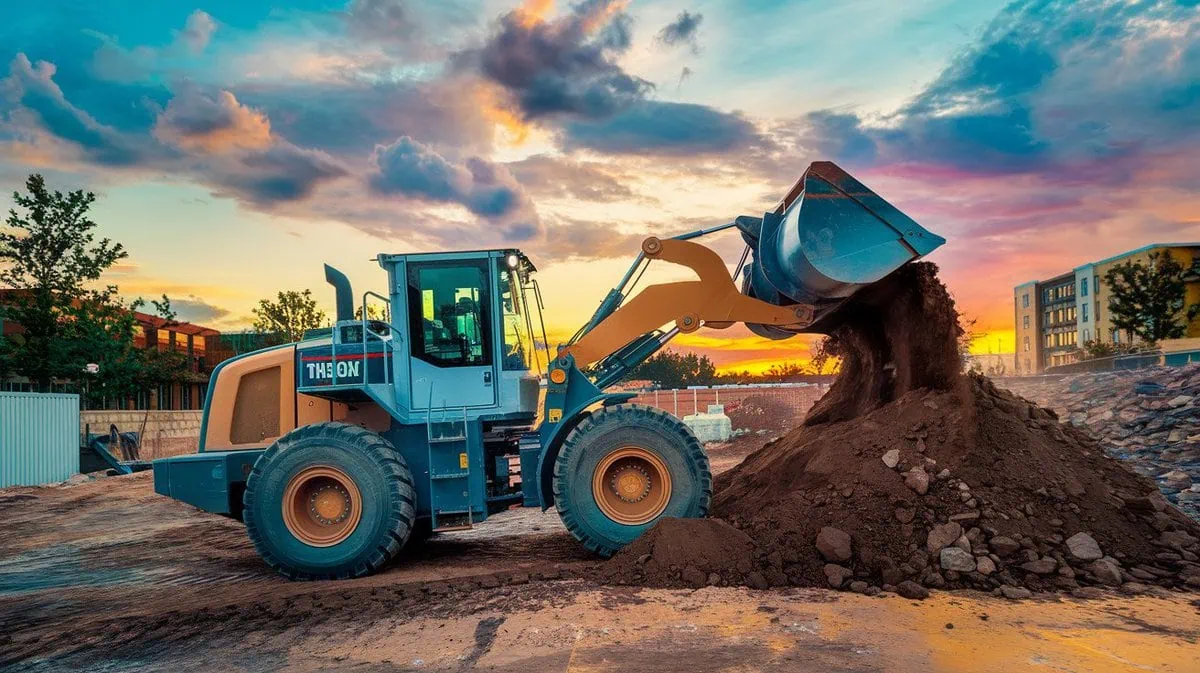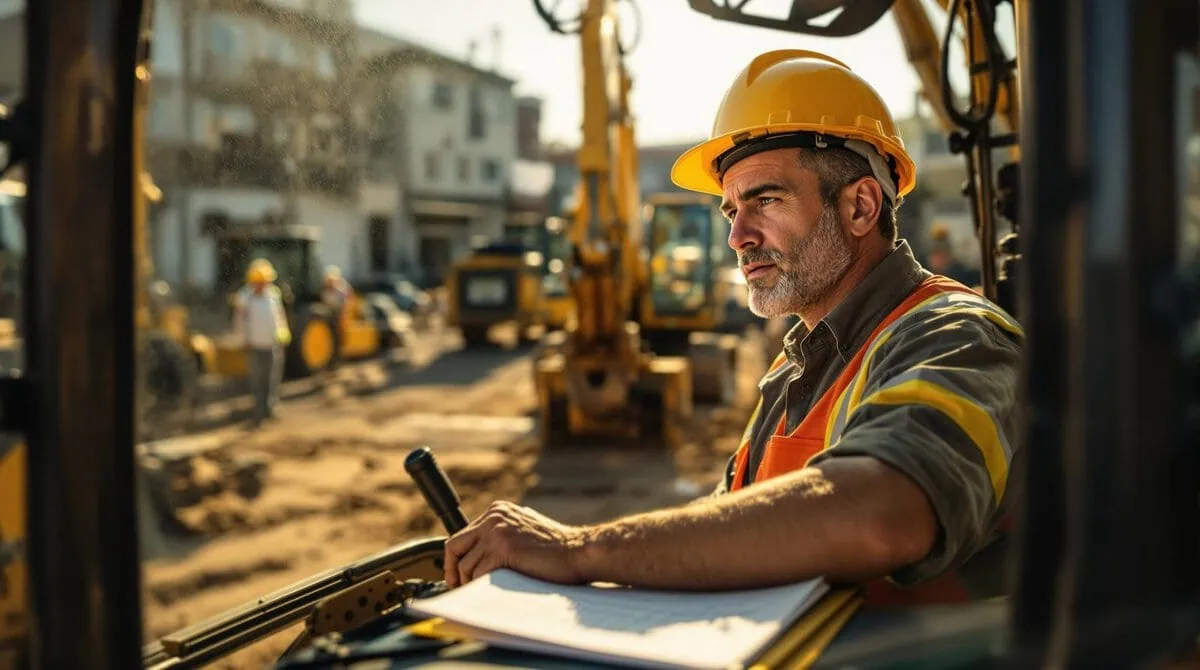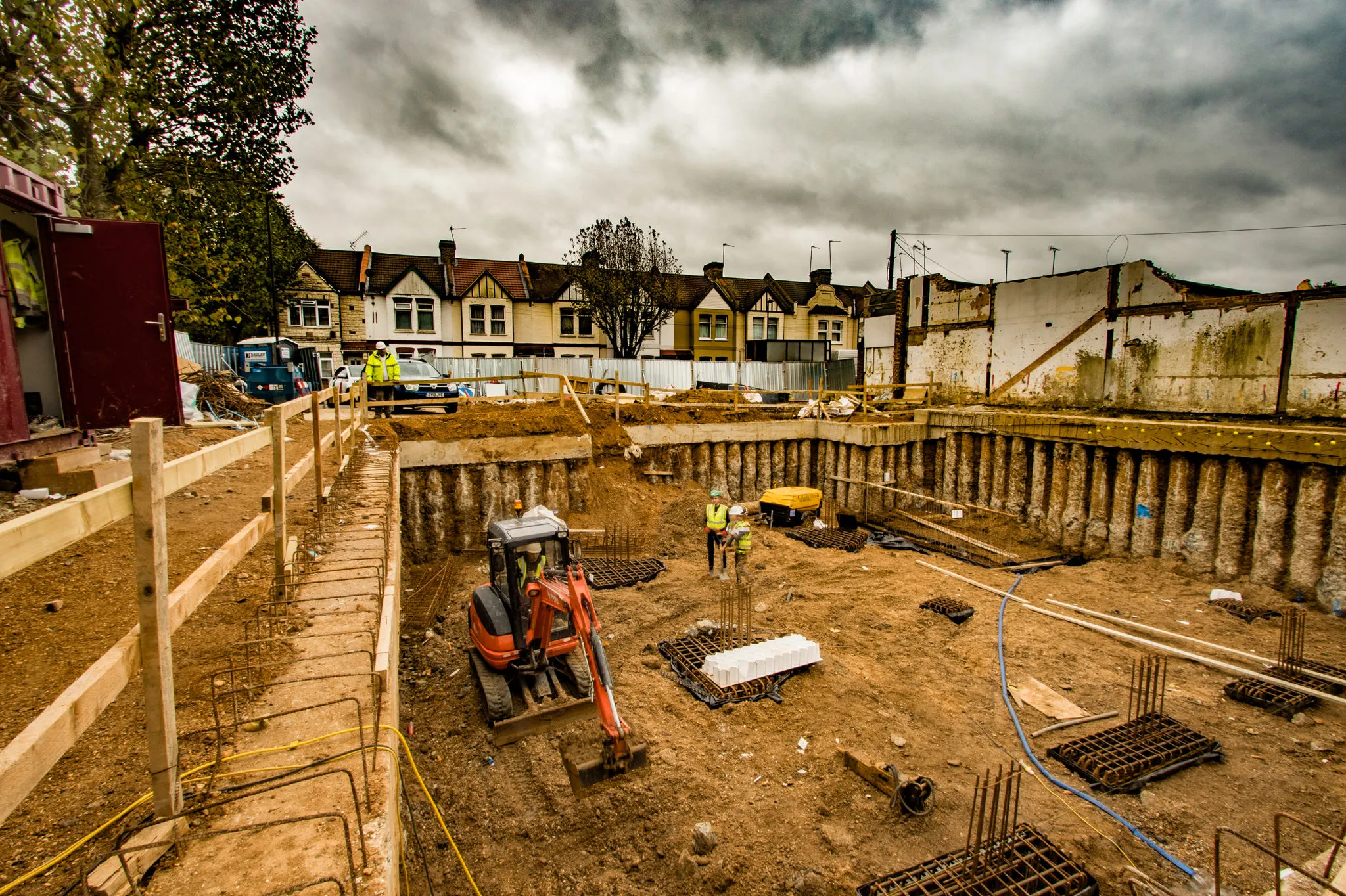Excavators are some of the most versatile and crucial equipment in the equipment and heavy construction world. These large machines are used for everything from digging the footings of a building to taking on large-scale demolition projects. Excavators come in all shapes, sizes, and capacities, and until you asses your need, you won’t know which one you should rent. Below, we take a look at the different types of excavators, what they do, and how to pick the right one to rent for your project.
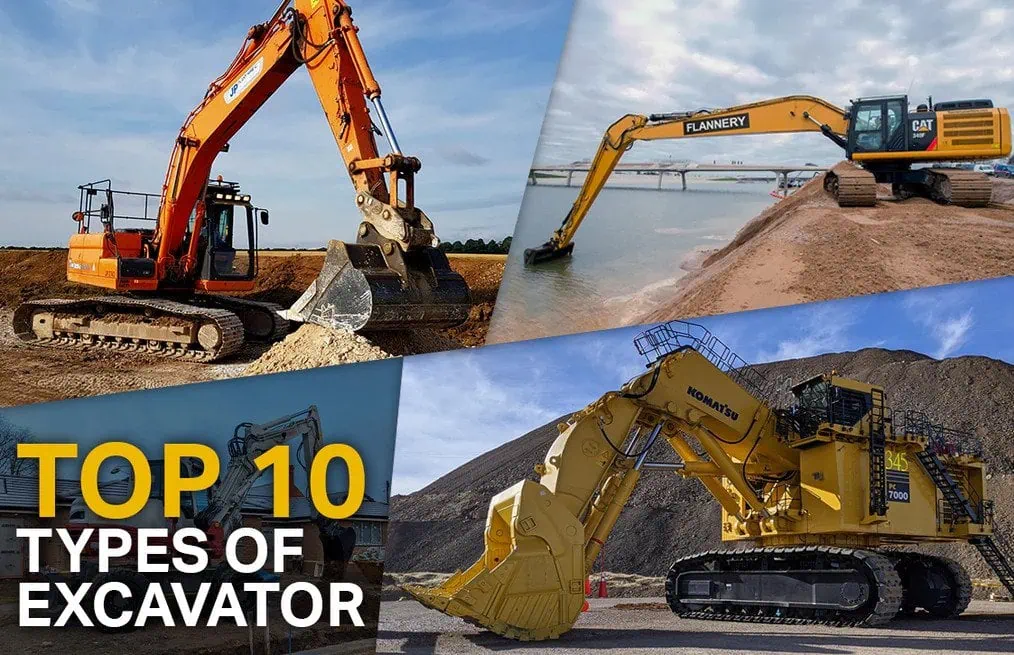
1. Description for Models of Excavators
An excavator is a type of heavy-duty machinery primarily used to dig, lift, and perform other earthmoving activities. With the continued growth of urbanization, the need for more robust and efficient excavators has also grown. These powerful machines can lift heavy loads, dig deep trenches, and perform a variety of tasks with precision, making them an essential part of a construction site. In this post, we will explore the different types of excavators, the features of the individual make and models of excavators, and how to choose the right excavator for the job.
2. Different Models of Excavators
There are different types of excavators made for specific jobs. The type of excavator you choose depends on the job you need to do and the environment you’ll be in. The following represent the most common types of excavators used on construction projects:
2.1 Crawler Excavators
A crawler excavator is characterized by its tracks instead of wheels. These tracks provide greater stability and traction on rough terrain. This makes a crawler excavator ideal for use in construction, mining, and demolition projects. The large footprint of the tracks also helps distribute the weight of the machine more evenly, so it doesn’t sink into soft dirt or mud.
- Use Case: Crawler excavator work great on jobs where you need a high lifting capacity. That includes heavy excavation, trenching, and demolition projects in rough or uneven terrain.
- Key Features: These machines are very powerful which can make them dangerous; they don’t travel at fast speeds but with a lifting capacity of several tons, you can suffer a serious injury or death if you get caught under the forks and are unable to free yourself.
Popular Crawler Excavators Models:
- Caterpillar 320D – A medium-sized machine designed for a wide range of construction tasks.
- Komatsu PC360LC-11 – A robust model ideal for heavy-duty digging, lifting, and clearing.
- Volvo EC950F Crawler Excavator – Excellent for larger construction sites where high lifting capacity and stability are needed.
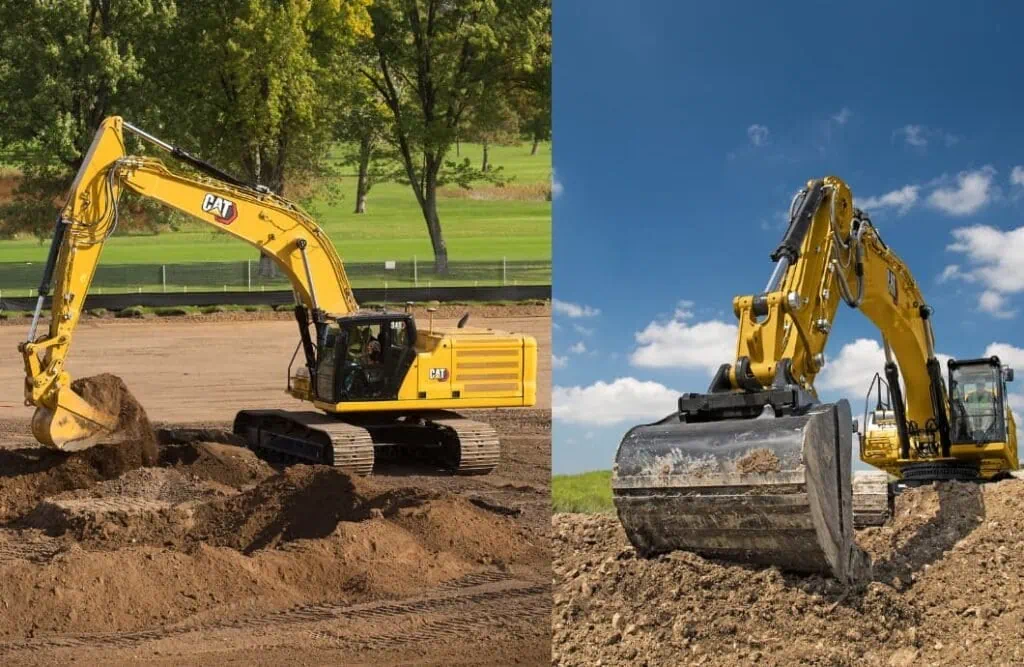
2.2 Wheeled Excavators
Wheeled excavators are in many ways the ‘jack of all trades’ in the excavator world. They aren’t necessarily the best, most powerful, fastest, or any other type of superlative; they are, however, a versatile machine that can perform a wide range of tasks, and do them well. Whether you should get one depends on what you plan to do with it.
- Use Case: Wheeled excavators are typically used for lighter construction tasks and projects that require more mobility, such as roadworks, utility work, and smaller urban projects.
- Key Features: Greater mobility, faster travel between sites, and more suitable for use on paved roads.
Popular Wheeled Excavators Models:
- Caterpillar M313F – A versatile model known for its high productivity in roadwork and urban areas.
- JCB 560-80 – An efficient, high-speed wheeled excavator used in a wide range of construction projects.
2.3 Mini Excavators
- These machines are known for their powerful engines, stability, and the ability to work in challenging environments such as soft soil, slopes, and muddy areas.
- Use Case: These machines are commonly used for digging small trenches, landscaping, small foundation work, and working in tight or confined spaces where larger excavators cannot operate.
- Key Features: Small footprint, ease of maneuverability, and the ability to reach areas inaccessible to larger machinery.
Popular Mini Excavators Models:
- Kubota KX080-4 – A popular mini excavator known for its ease of use, durability, and compact design.
- Bobcat E165 – One of the best models for tight spaces and high performance on residential job sites.

2.4 Long Reach Excavators
These machines tend to be much more powerful than the average machine. They’re capable of handling the tough jobs in areas where space may be an issue. On the downside, they can also create a safety issue because they’re so powerful.
- Use Case: Ideal for working in areas with restricted access, such as high-rise buildings, large excavation projects, or places where traditional excavators cannot reach.
- Key Features: Extended reach, heavy lifting capabilities, and specialized attachments for deep and high excavation.
Popular Long Reach Excavators Models:
- Caterpillar 330FL Long Reach – Offers unmatched reach for large excavation projects.
- Komatsu PC490LC-11 – Known for its powerful performance and ability to handle deep excavation work.
2.5 Dragline Excavators
These machines are known for their incredibly powerful engines, stability, and ability to work in challenging environments like soft soil, on slopes, and in muddy areas.
- Use Case: These machines are commonly used in mining operations to remove overburden and extract minerals. They are also used for large-scale dredging projects.
- Key Features: Extremely large bucket capacity, ideal for handling vast amounts of material in a single scoop.
Popular Dragline Excavators Models:
- Liebherr HS 8300 – Known for its ability to move large quantities of material at once.
- Caterpillar 8750 – A highly capable dragline excavator used in mining operations.

3. How Many Types of Excavators Are There?
In total, there are five main categories of excavators based on their size and purpose:
- Crawler Excavators – Used for heavy-duty digging in challenging terrains.
- Wheeled Excavators – Ideal for tasks that require frequent movement and travel.
- Mini Excavators – Compact machines used for light digging in tight spaces.
- Long Reach Excavators – Designed for deep or extended digging projects.
- Dragline Excavators – Used primarily in mining and large-scale earth-moving operations.
That’s the one I want to talk about because wheeled excavators are not on tracks. They are mounted on tires—you got it, big wheels.
4. What Do Excavator Model Numbers Mean?
In their own way, all of these models of excavators are incredibly powerful, several tons. Quite honestly, they can be very dangerous. The size of these things and their ability to lift several tons means they can do great bodily injury or death if you don’t use them correctly.
- Example: The Caterpillar 320D is a 20-ton machine from Caterpillar’s D-series.
- Komatsu Model Numbers: Komatsu typically uses the “PC” prefix for crawler excavators (e.g., Komatsu PC200-8), followed by the weight class and series.
- Hitachi: A typical model might be ZX250LC-6, where “ZX” indicates it is a hydraulic excavator, and “250” refers to the weight class.
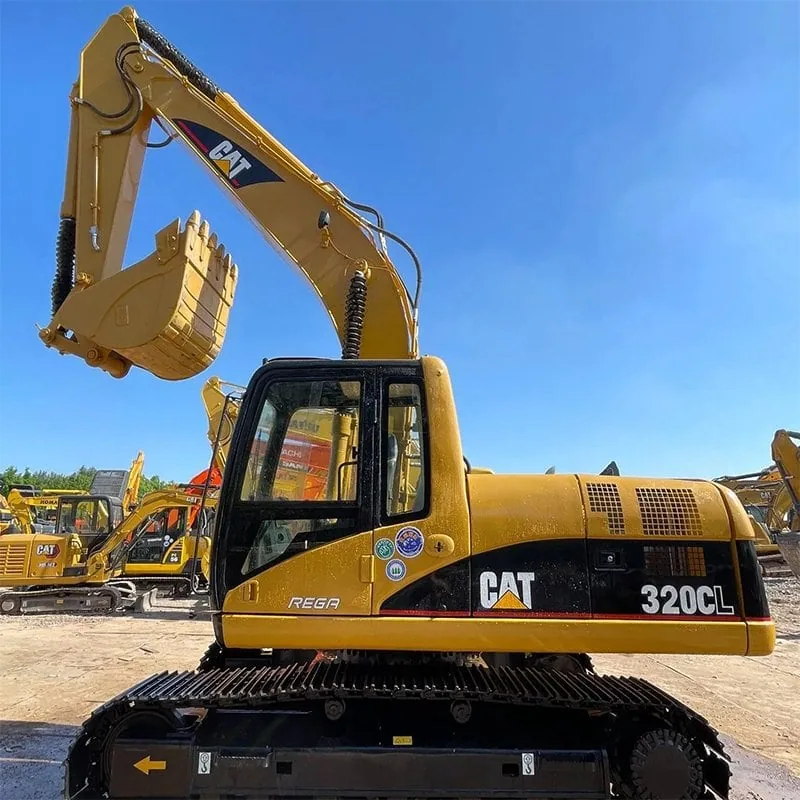
5. Excavator Model Numbers: Caterpillar and Komatsu Examples
Caterpillar Excavator Model Numbers
Caterpillar is one of the most trusted names in the excavator industry. Their model numbers often indicate the machine’s weight class and generation:
- 320D – A mid-sized crawler excavator, popular for a wide range of general construction tasks.
- 336F – A larger machine designed for heavy-duty lifting and digging, used in bigger construction projects.
Komatsu Excavator Model Numbers
Komatsu offers a wide range of excavators for different construction and mining applications:
- PC200-8 – A medium-sized excavator, ideal for medium-scale digging and construction.
- PC360LC-11 – A heavy-duty machine used in large construction projects, with higher lifting capacity and stability.
There are rubber-tired excavators which are not on tracks. They are mounted on rubber tires. They’re faster and more mobile than tracked machines, which will help some people (like those working in cities or needing to move the machine a lot). You can move them down the road (towed or on their tires). They’re extremely versatile and can do many things well. Just to be honest, they are not the best at any one thing.
6. Excavator Sizes: How Many Different Sizes Are There?
The nice thing about the mini-excavator is that it’s usually compact and lightweight. Although it’s small, the mini-excavator can lift several thousand pounds and dig deep. This machine is most often used by contractors working in tight places where a tiny machine can dig, like residential or small commercial sites.
Mini Excavators
You’ll find the big brother of the cable backhoe, the dragline, used primarily for large, deep excavation work. You’ll find them really large and thus not practical for most home use. These are primarily used in large-scale building projects, mining, or dredging.
Midi Excavators
You’ll find the big brother of the cable backhoe, the dragline, used primarily for large, deep excavation work. You’ll find them really large and thus not practical for most home use. These are primarily used in large-scale building projects, mining, or dredging.
Standard Excavators
Another kind of excavator is the wheeled excavator. These machines are mounted on rubber tires, making them faster and more maneuverable than the crawler-type. They’re adept in urban environments where the speed of movement helps get the job done quickly. One downside is that while they can do many jobs, they’re not the fastest or best at any job. But if your job is a moving project from one stop to another, a wheeled excavator is hard to beat for speed.
Large Excavators
Another type of excavator is the mini excavator. These machines are very compact and lightweight, with models weighing as little as half a ton! Don’t let their size fool you; these little guys are capable of digging and lifting a considerable amount (depending on the model). That’s why contractors who often work in tight spaces, such as residential and other smaller commercial contractors, love them.

7. What Is the Largest Type of Excavator?
Excavators are tremendous machines capable of lifting and digging large loads. They work very well in adverse conditions such as soft soil, on the side of hills, in the mud, or wherever you need them to work. Because of their size, weight, and lifting capability, these machines can be dangerous. If you ever see one flipped over on the side, you start to get an idea of how serious the situation can be. It can fall on somebody or even partially fall, causing serious injury or death.
8. What Is the Most Popular Excavator Brand?
When it comes to reliability and performance, several brands stand out in the excavator market:
- Caterpillar: Known for its durability and innovation.
- Komatsu: Offers a wide range of models suited for various construction applications.
- Hitachi: Renowned for fuel efficiency and advanced technology.
- Volvo: Known for its environmentally friendly models and advanced features.
The final type of excavator is the midi excavator, which ranges in weight from six to 12 tons. These are a nice balance of maneuverability and lifting capability, making them ideal for medium-sized jobs.
9. Excavator Applications in Construction Projects
The last type of excavator is the midi excavator. These machines vary in size from six to 12 tons. They are a perfect compromise between maneuverability and lifting ability. This makes them ideal for the mid-size job between a mini excavator and a large full-sized excavator.
- Crawler Excavators: Ideal for heavy-duty tasks in challenging environments like muddy terrains or construction sites with poor soil conditions.
- Mini Excavators: Perfect for small-scale residential projects like landscaping or digging small foundations.
- Wheeled Excavators: Used in projects that require speed and mobility, such as road construction or utilities.
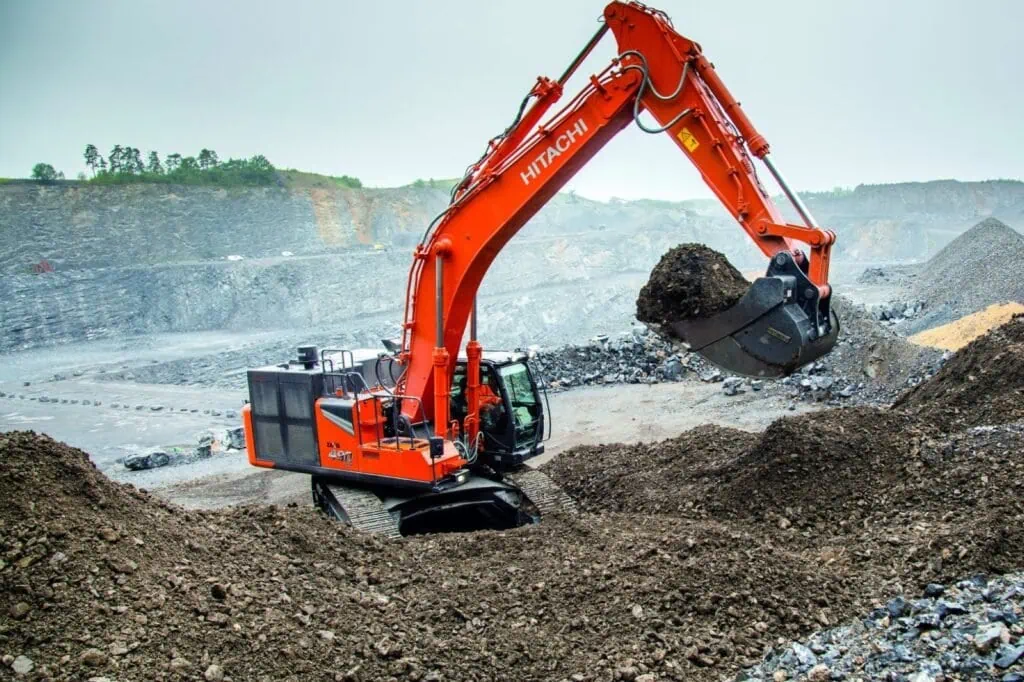
10. Key Factors to Consider When Choosing an Excavator for Your Project
Digging. Trenching. Lifting. Those are what different types of excavators are designed to do, and there are different types for the many construction and application types. Choosing the right excavator model for a construction project involves more than lifting. Being able to lift and dig is essential, but there is more to selecting the right machine.
Factors to Consider:
- Project Type and Scale: The type of excavation required and the size of the project will determine the appropriate excavator model. For instance, a small landscaping project may only require a mini excavator, whereas a large construction site might need a powerful crawler excavator.
- Terrain and Accessibility: The terrain of the site plays a crucial role in the choice of excavator. If you’re working on a rough, uneven, or muddy site, a crawler excavator with its superior traction and stability may be a better option. On the other hand, wheeled excavators are ideal for urban settings where mobility and speed are essential.
- Machine Versatility: Some excavators are designed to perform a variety of tasks with the help of interchangeable attachments, such as buckets, breakers, or grapples. If your project requires multiple tasks, it may be worth considering an excavator model that offers greater versatility.
Additional Considerations:
- Cost and Budget: Excavators come at a wide range of price points depending on the model, size, and brand. It’s important to set a budget and consider both upfront costs and long-term maintenance and operating expenses.
- Operator Experience: Some excavator models are easier to operate than others, with advanced features like user-friendly controls, safety features, and onboard technology. It’s crucial to select a model that matches the skill level of the operators.
By considering these key factors, you can choose the excavator that best suits your specific needs, ensuring that your project runs smoothly and efficiently.
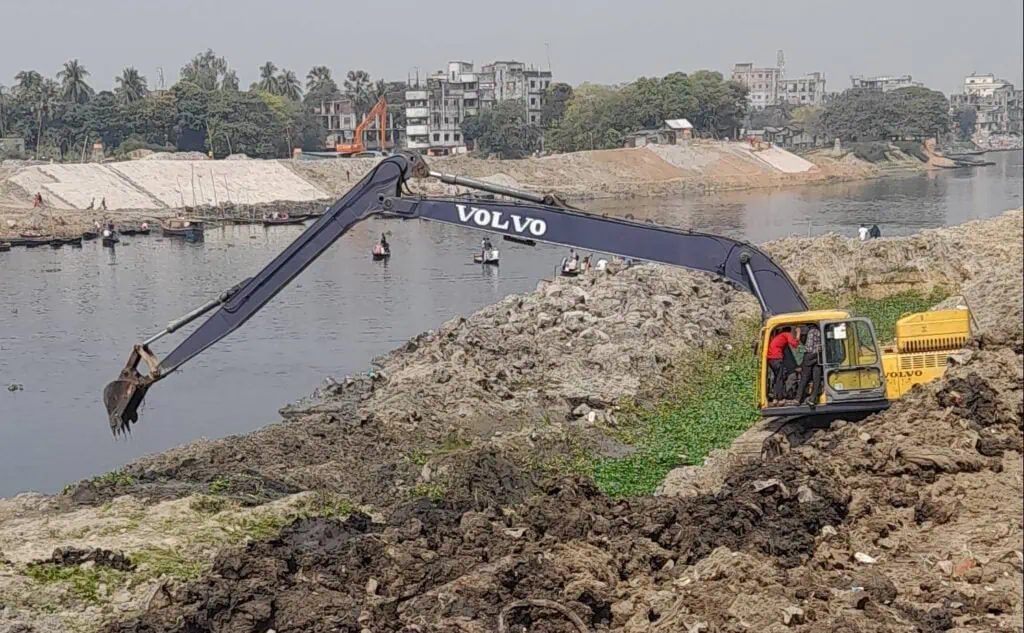
11. Maintenance Tips to Keep Your Excavator in Optimal Condition
I love excavators since the day I dug my first hole with one. Excavators are one of the most crucial pieces of equipment on a construction site because they are used for digging, trenching, lifting, and even some demolition. They can work where it would be impossible for any other piece of equipment to work.
Essential Excavator Maintenance Tasks:
- Regular Inspections: Conduct routine checks of the engine, hydraulics, undercarriage, and other key components. Look for signs of wear, leaks, or irregularities that could indicate potential problems.
- Changing Fluids: Regularly changing the engine oil, hydraulic oil, and coolant ensures that the excavator runs smoothly and reduces the risk of overheating or other issues. Refer to the manufacturer’s guidelines for recommended intervals.
- Cleaning and Lubrication: Keep the excavator clean to prevent dirt, debris, and mud from accumulating in vital areas, especially in the engine compartment and undercarriage. Lubricate the moving parts to prevent unnecessary wear and tear.
- Track and Tire Maintenance: For crawler excavators, regularly check the tracks for tension and wear. For wheeled models, inspect the tires for damage or deflation.
Professional Servicing and Repairs:
Digging. Trenching. Lifting. Those are what different models of excavators are designed to do, and there are different types for the many construction and application types. Choosing the right excavator model for a construction project involves more than lifting. Being able to lift and dig is essential, but there is more to selecting the right machine.
Make sure to take care of your investment if you want to keep your excavator working well for the long run, keep it performing more like it did when it was new, and save on costs at the same time. So you have to confirm the right models of excavators in your project.

Conclusion
Excavators are sizable pieces of equipment that are great for lifting and digging large loads. They work extremely well in unfavorable conditions, like soft soil, on the side of a hill, in the mud, or wherever you need them to work. Due to their size, weight, and ability to lift, these machines can be quite dangerous. If you have ever seen an excavator flipped over on its side, you start to get an idea of how serious the situation can be. It can fall on somebody, or part of it can fall and cause severe injury or death.
Excavators are massive machines with the ability to lift and dig big loads, which makes them fantastic pieces of equipment. They do an excellent job in adverse conditions like soft soil, on the side of a hill, in the mud, or wherever you need them to work. Due to their size, weight, and ability to lift, they can be extremely dangerous. If you have ever seen an excavator flipped over on its side, you start to understand what I mean. It can fall on somebody, or part of it can fall and cause severe injury and death. Contact with us for more information!

